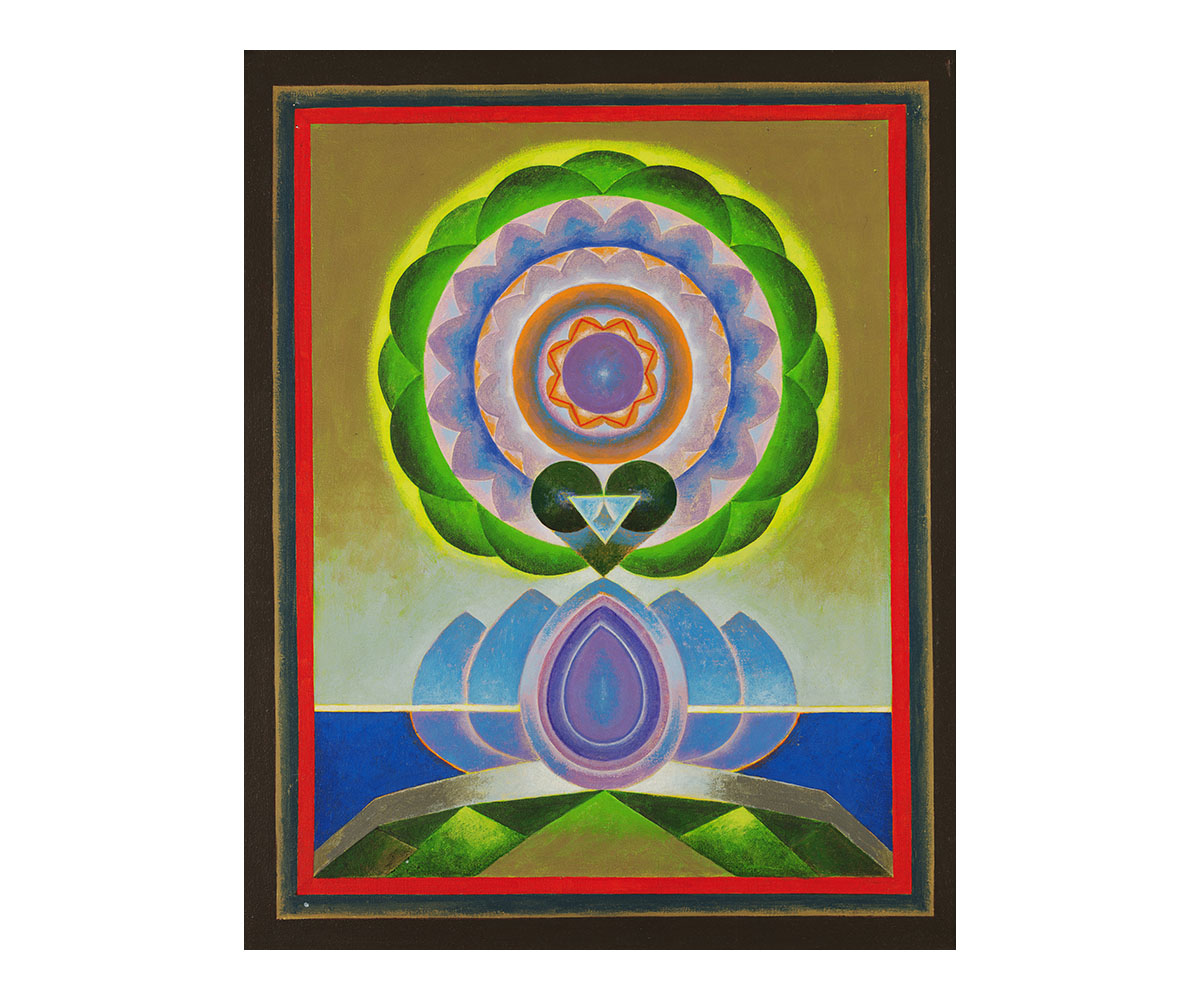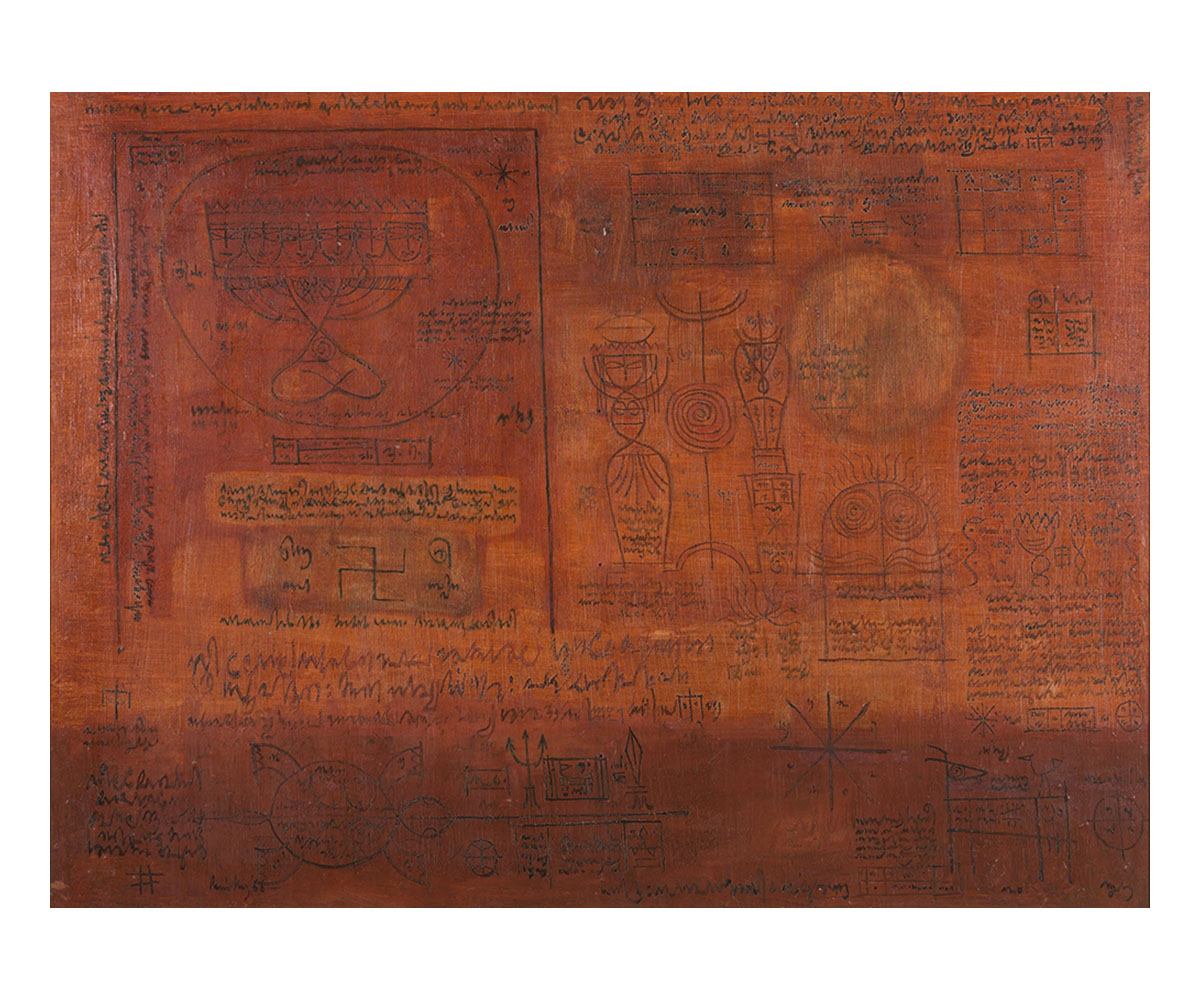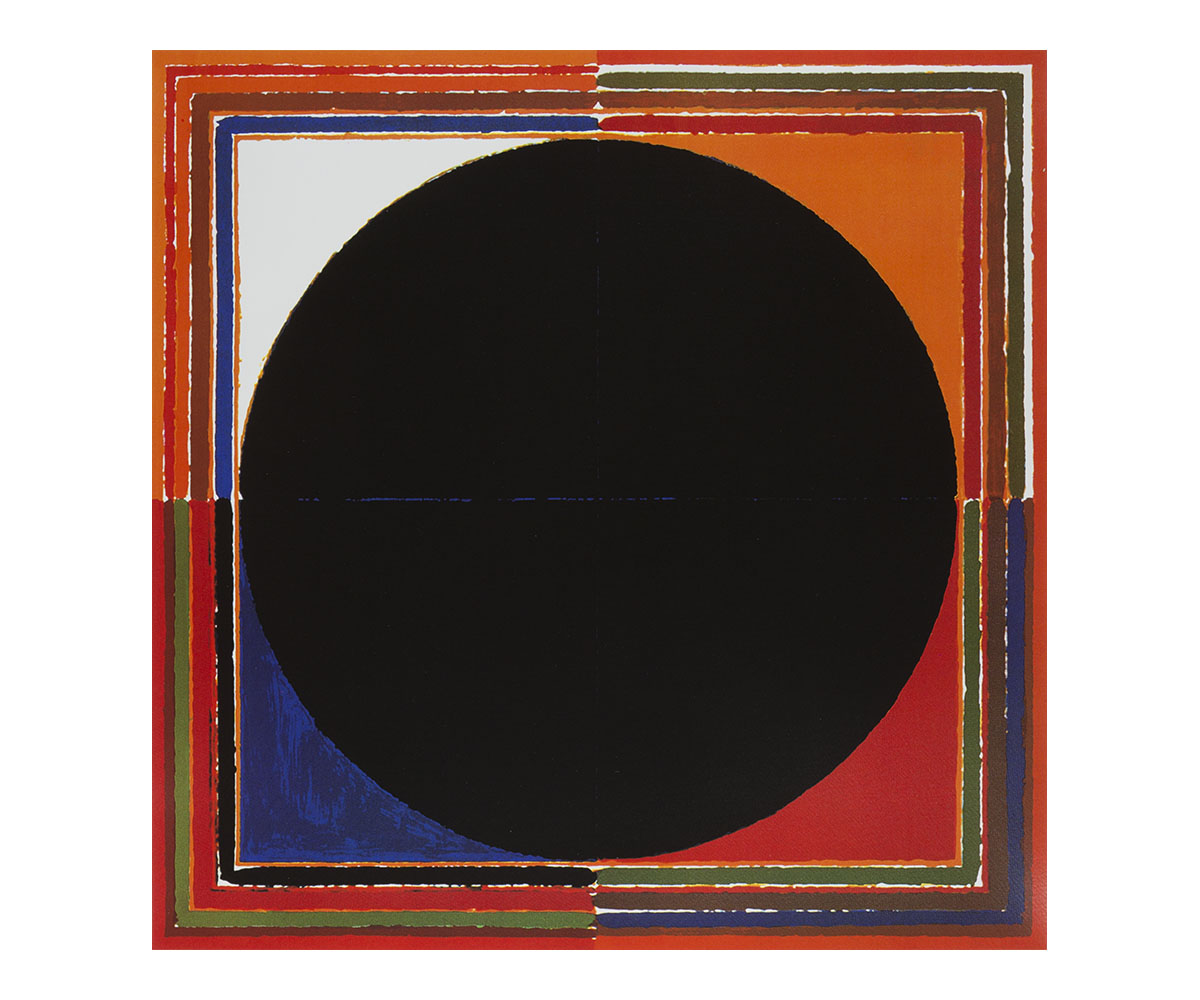ARTICLE
Neo-Tantric Art
A formal and thematic category of painting conceived in India, Neo-Tantric art has its conceptual and visual basis in the representational motifs and symbols of Buddhist and Hindu Tantra. It refers in particular to works produced primarily in the 1960s and 1970s, during the high point of interest in Tantric doctrines and practices. Though not an organised art movement, it is considered by art historians and critics, such as LP Sihare, who first coined the term Neo Tantra, as a cohesive body of work produced by several artists whose vocabulary is inspired by the philosophical and visual elements of Tantra.
Neo-Tantric art emerged in the backdrop of the Tantra revival in India, which was spurred by translations of key texts and an accompanying increase in scholarship on all aspects of Tantrism, from painting, sculpture, architecture and ritual traditions. This heightened interest resulted in several exhibitions being held and seminal books being published on the subject, such as Tantra Art (1967) and Tantra Asana (1971) by scholar Ajit Mookherjee and The Art of Tantra (1973) by curator Philip S. Rawson. Encounters with international countercultures such as the Beat poets of the sixties and the hippies of the seventies, with their ideological affiliations to Asian spirituality, and the sudden international interest in Tibetan Buddhism following the exile of the Dalai Lama in 1959 provided impetus to reclaim traditional concepts that had long been ‘otherised’ in the West. The means for this reappropriation was found in Neo-Tantric art, which several artists also saw as a way to articulate their Modernism.
The earliest precursor of Neo-Tantric art is considered to be KCS Paniker’s work Words and Symbols (1965/66), which featured abstractions of archetypal figures, ritual diagrams, astrological charts and mandalas. Some of these elements, especially the visual metaphors derived from Tantra came to form the core vocabulary of the genre, whose key proponents included the artists Biren De, GR Santosh, PT Reddy, KV Haridasan, Acharya Vyakul and Mahirwan Mamtani. Recurring motifs in the works of De and Santosh are the male and female principles central to Tantric thought, abstracted through geometric forms and colour or through bright patterns and shapes. Vyakul’s works on the other hand combine Tantric imagery with elements of folk and popular art that emphasise ritual and tradition. Mamtani drew his inspiration from the mandala and rendered his abstractions using a combination of colour, form and geometry. Reddy wholly reappropriated Tantric art by visually reinterpreting its concepts and recasting its visual motifs of geometric yantras, sonic syllables and mantras and the primordial egg or bindu, into complex compositions, which he sometimes even used to allude to socio-political developments. Haridasan articulated his visual language with a regional specificity, using texts such as Brahmasutra and concepts such as panchabhutas (five cosmic elements) to reinterpret Tantric symbolism as metaphors for nature. SH Raza, although not strictly identified with the genre, produced the Bindu (1970s–) series and other works inspired by and prominently featuring the singular dot symbol from the Tantra vocabulary.
The 1985 exhibition Neo-Tantra at the University of California Los Angeles’ Frederick S. Wright Gallery, curated by Edith Tonelli and Sihare, is credited with formally recognising Neo-Tantra as a distinct category of art made by a non-affiliated group of artists, including De, Santosh, Reddy and others. The exhibition, which featured the works of De, Santosh, Reddy and others, was a part of the Festival of India, was one of only a few to have featured modern and contemporary artworks. It is therefore considered to have been instrumental in placing Neo-Tantric art on the international stage as a culturally and visually authentic form of Indian Modernism, and in counterposition to European and American abstraction,. Subsequent to this exposure, it began to grow popular in international exhibitionary circuits and art markets and flourished in the late eighties and nineties.
The individual works of Neo-Tantric artists continue to feature in international sales and auctions, including an auction at the Sotheby’s in 2020. Group and thematic exhibitions have also contributed to the continued interest in the genre and its various interpretations. One such exhibition at the Aicon Gallery, New York, Tantric: The Corporeal and the Cosmic (2016), also featured the works of contemporary artists such as Shobha Broota, Manisha Parekh and Ranbir Kaleka, who although not identified as Neo-Tantric artists are known to incorporate features of it in their art. A more recent effort, as of writing, to collate and display works of both Tantric and Neo-Tantric artworks was the British Museum’s exhibition titled Tantra: enlightenment to revolution (September 2020–January 2021). Besides tracing Tantra’s historical and artistic moorings, it also sought to situate its goddess cult within contemporary feminist discourse.
Neo-Tantric art ceased to exist as a genre towards the end of the 1980s due to changes in the artistic landscape, which in turn were caused by increasing globalization and the changing socio-cultural character of the country. However, because of its role in the development of Modern art in India, it has continued to occupy an important place in Indian art history. It has also lent and continues to lend its influences to contemporary art across various media.
Bibliography
Our website is currently undergoing maintenance and re-design, due to which we have had to take down some of our bibliographies. While these will be re-published shortly, you can request references for specific articles by writing to hellomapacademy@map-india.org.










